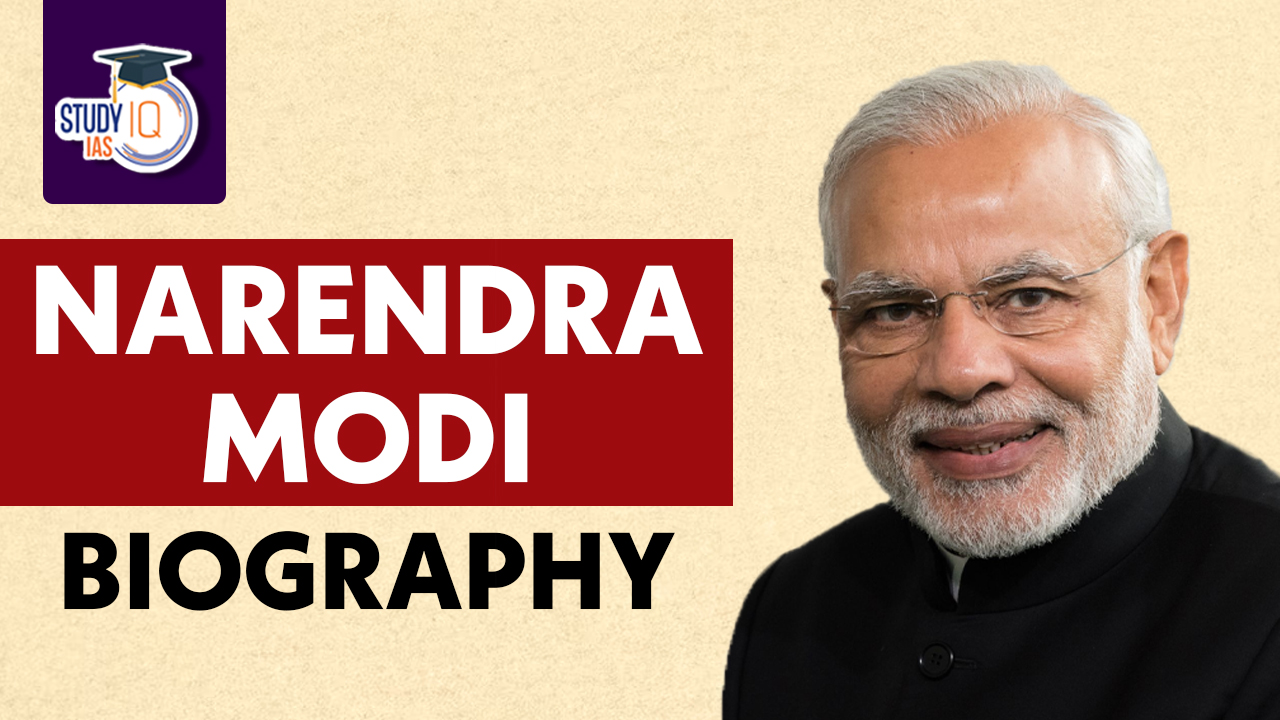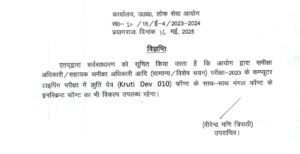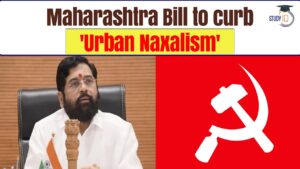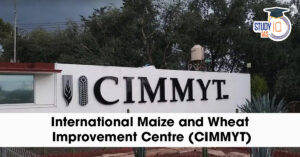Table of Contents
Narendra Modi, born on September 17, 1950, in Vadnagar, Gujarat, is the current Prime Minister of India. Known for his dynamic leadership, Modi has emerged as a prominent figure both in Indian politics and on the global stage.
Narendra Modi Biography
Prime Minister Narendra Modi:Narendra Modi, born on September 17, 1950, in Vadnagar, Gujarat, India, is an Indian politician who has served as the Prime Minister of India since May 2014. He belongs to the Bharatiya Janata Party (BJP), a right-wing political party in India. Modi’s rise to political prominence is marked by his journey from a humble background to becoming one of the most influential leaders in Indian politics.
Narendra Modi Age, Date of Birth, and Full Name
| Facts about Narendra Modi | |
| Date of Birth of Narendra Modi | PM Modi was born on September 17, 1950. |
| Age of Narendra Modi | In Vadnagar, Gujarat, on September 17, 1950, the current Prime Minister Narendra Modi was born hence PM Modi Age is 73 years. |
| Full Name of Narendra Modi | His full name is Narendra Damodardas Modi. |
| Constituency of Narendra Modi | He serves as the Lok Sabha representative for the Varanasi constituency and is recognised as a strong party strategist. |
Narendra Modi’s Early Life
Narendra Modi, the current prime minister, was raised in a small village in northern Gujarat. Gujarat University in Ahmedabad is where Modi earned his M.A. in political science. He organised a local chapter of the Akhil Bharatiya Vidyarthi Parishad, the RSS’s student wing, shortly after joining the pro-Hindu Rashtriya Swayamsevak Sangh (RSS) at the start of the 1970s. As he rapidly moved up the RSS hierarchy, Narendra Modi’s connection to the organisation immensely benefitted his eventual political career.
When Modi joined the BJP in 1987, the Gujarat branch of the party appointed him general secretary. Over the subsequent years, Narendra Modi had a crucial role in the party’s influence in the state expanding dramatically. For the BJP to construct India’s first-ever BJP-controlled government in March, Narendra Modi contributed to the party’s victory in the 1995 state legislative assembly elections. In 1990, a coalition administration was formed in the state, and Narendra Modi was one of the BJP members who participated. However, the BJP only had control over the state government until September 1996.
Narendra Modi Education
Narendra Modi, the Prime Minister of India has a relatively humble educational background. Here is a summary of Narendra Modi Education:
- Primary Education: Narendra Modi was born on September 17, 1950, in Vadnagar, a small town in Gujarat, India. He completed his primary education in Vadnagar.
- Higher Secondary Education: He completed his higher secondary education at a school in Vadnagar.
- Bachelor’s Degree: Narendra Modi earned a Bachelor of Arts (BA) degree from the University of Delhi, where he studied political science and received his degree in 1978.
- Postgraduate Degree: After completing his Bachelor’s degree, Modi pursued a Master’s degree in political science from the University of Gujarat in Ahmedabad. He completed his Master’s in 1983.
After his education, Narendra Modi worked in various capacities, including as a pracharak (campaigner) for the Rashtriya Swayamsevak Sangh (RSS), a right-wing Hindu nationalist organization, and later in the Bharatiya Janata Party (BJP), where he rose through the ranks to become the Chief Minister of Gujarat in 2001.
In a lower-middle-class family of grocery store entrepreneurs, Narendra Modi was raised. He has shown that success is irrespective of one’s caste, religion, or place of residence. He was the first prime minister of India whose mother was still around when he took office.
Since that year, Indian politician Narendra Damodardas Modi has served as the country’s 14th and current prime minister. Formerly, from 2001 to 2014, he served as Gujarat State’s chief minister. He represents the Uttar Pradesh district of Varanasi in the legislature. He is a member of both the Rashtriya Swayamsevak Sangh (RSS), a right-wing paramilitary organisation of Hindu nationalists, and the Bharatiya Janata Party (BJP). Of all the parties save the Indian National Congress, he has held the position of prime minister the longest.
Narendra Modi Political Career
Narendra Modi always displayed the utmost zeal and enthusiasm when it came to helping and supporting those who were in need. Narendra Modi offered his services to the soldiers at the train stations in 1965, during the Indo-Pak conflict. He also assisted those in need in Gujarat in 1967 during the floods. Modi started working for the Gujarat State Road Transport Corporation at the staff canteen. He later left there and started working full-time as an activist and advocate for the RSS, also known as a “pracharak.” Modi later attended the RSS camp in Nagpur for training.
To occupy any official position in the Sangh Parivar, any RSS member must enrol in the training programme. Akhil Bharatiya Vidyarthi Parishad (ABVP), the student wing’s more popular name, was presented to Narendra Modi. Senior political figures were impressed by his anti-emergency movement involvement. As a result, he was eventually chosen to serve as the regional organiser of Gujarat’s newly established Bharatiya Janata Party.
From an early age, Narendra Modi shown excellent organisational skills. He coordinated protests against the Emergency’s control as well as the covert distribution of RSS booklets during that time. During his time in the RSS, he interacted with Vasant Gajendragadkar and Nathalal Jaghda, two Jan Sangh stalwarts who went on to create the Gujarat state chapter of the BJP. Narendra Modi was introduced to politics in 1987 by the RSS, which suggested that he run for the BJP. Modi gained notoriety after overseeing the Ekta Yatra for Murli Manohar Joshi, which led to recognition of his effectiveness.
Political Timeline of Narendra Modi From 1975 to 2024
| Years | Events |
| 2019 | Narendra Modi, the prime minister of India, has been elected for a second five-year term. |
| 2014 | The 14th and current Prime Minister of India is Narendra Modi. On May 26, 2014, Modi took the oath of office as India’s prime minister. After India gained its independence from the British Empire, he became the country’s first prime minister. |
| 2012 | Modi won re-election in Maninagar. This time, he won by 34097 votes over Bhatt Shweta Sanjiv. In his fourth stint as chief minister, he again took the oath. Later, in 2014, he left the assembly. |
| 2007 | The third term of Modi’s leadership as CM began on December 23, 2007, and it ended on December 20, 2012. Once more, he prevailed over Maninagar. Dinsha Patel of Congress lost to him. |
| 2002 | The assembly election was won by him, who ran from Maninagar. By 38256 votes, he defeated Congressman Oza Yatinbhai Narendrakumar. He continued to serve as Gujarat’s chief ministers (The second term). |
| 2001 | Keshubhai Patel’s health was deteriorating, and the BJP suffered a couple losses in by-elections for state assembly seats. Modi took over as Gujarat’s Chief Minister after Patel was ousted by the BJP’s national leadership. Modi took his oath as Gujarat’s chief executive on October 7, 2001. He won the Rajkot II constituency’s by-election on February 24, 2002. By 14,728 votes, he defeated Ashwin Mehta of the INC. This was his first and only temporary position. |
| 1995 | He moved to New Delhi after being appointed BJP national secretary. He oversaw the Himachal Pradesh and Haryana electoral campaigns. In 1996, Modi was given the opportunity to become the BJP’s general secretary. |
| 1990 | Modi participated in the planning of L. K. Advani’s 1990 Ram Rath Yatra and Murli Manohar Joshi’s 1991–1992 Ekta Yatra. |
| 1987 | Modi was chosen to serve as the Gujarat branch of the BJP’s organising secretary. |
| 1986 | Modi succeeded L. K. Advani as BJP president. At that time, the RSS made the decision to give its members key posts within the BJP. |
| 1985 | Modi was given to the BJP by RSS. Modi assisted in planning the BJP’s campaign for the Ahmedabad municipal election later in 1987. The BJP won that election. |
| 1979 | He relocated to Delhi and started working with the RSS, where he was assigned to write and do research for the RSS’s account of the Emergency. |
| 1978 | He became a “RSS sambhag pracharak.” associated with RSS activity in the Surat and Vadodara regions. |
| 1975 | The RSS chose Narendra Modi to be the organization’s general secretary, or “Gujarat Lok Sangharsh Samiti”. In order to avoid being arrested during the Emergency, Modi was compelled to hide. Printing pamphlets critical of the government was something he did. |
Narendra Modi’s Tenure as Chief Minister of Gujarat
As Gujarat’s chief minister, Modi marketed the state as “Vibrant Gujarat,” asserting that it had experienced significant economic growth and infrastructural development. However, some critics also draw attention to the state’s poverty, malnutrition, and lack of adequate education. According to statistics, the state was placed 18th in terms of literacy rate in 2014 and 14th in terms of poverty as of September 2013. On the other side, according to state officials, the state excels in terms of women’s education compared to other states. Additionally, the rates of maternal death and school dropout decreased. Gujarat is another state where the issue of land mafia is nonexistent.
The progress in the state, in contrast to what the state officials claimed, only affected the urban middle class, according to political scientist Christophe Jaffrelot. Government negligence extended to those living in rural areas and those who belonged to lower castes. Jaffrelot claimed that the number of people living in poverty had increased during Modi’s administration. The Dalit and tribal communities were viewed as inferiors at the same time. Other critics share the same opinion, including renowned economist Amartya Sen.
First Term (2001 to 2002)
- Narendra Modi was selected as Gujarat’s chief minister on October 7, 2001.
- He was charged with organising the party in anticipation of the elections in December 2002.
- Modi prioritised the privatisation of small government institutions while serving as chief minister.
- Violence in Gujarat in 2002: On February 27, a train carrying a large number of passengers—mostly Hindu pilgrims—near Godhra were set ablaze, resulting in the deaths of 58 persons. This incident led to anti-Muslim riots, which quickly spread throughout practically all of Gujarat.
- The number of fatalities was estimated to be between 900 and 2,000. Curfews were implemented by the Narendra Modi-led administration in Gujarat in order to stop the violence from getting worse. The Modi administration was criticised by human rights groups, the media, and the opposition for taking ineffective and unsuitable measures to stop the violence.
- In April 2009, the Supreme Court formed a Special Investigation Team (SIT) to look into Modi’s and the government’s involvement. The SIT informed the court in a report it submitted in December 2010 that it had not discovered any evidence against Modi. But in July 2013, the SIT was accused of hiding evidence.
- As a result, pressure on the BJP increased as many opposition parties and allies called on Modi to resign from his role as chief executive. However, the BJP won a complete majority in the ensuing elections by gaining 127 of the 182 seats.
Second Term (2002 to 2007)
- Modi placed a strong emphasis on Gujarat’s economic development, which led to the state becoming a popular place for investments.
- He established financial and technological parks in the region.
- Gujarat inked real estate investment agreements of Rs. 6,600 billion at the Vibrant Gujarat Summit in 2007.
- In July 2007, Gujarat Chief Minister Narendra Modi served for 2,063 straight days, setting a record for the longest period of time in that position.
Third Term (2007 to 2012)
Later on, the state’s agricultural output significantly increased, largely as a result of initiatives to increase groundwater supplies in locations like Kachchh, Saurashtra, and other northern regions of the state. Additionally, initiatives were made to expand the usage of micro-irrigation and supply farms with an effective power source.
5,00,000 structures were built as part of infrastructure development projects in 2008, 1,13,738 of which were check dams. Out of the 112 tehsils, 60 had their groundwater levels return to normal in 2010. The production of Bt cotton that has been genetically engineered rose as a result. Gujarat’s agriculture growth rate grew to 9.6% between 2001 and 2007, and the state’s compound annual growth rate over the ten years from 2001 to 2010 was 10.97%, the highest of all Indian states.
Agriculture flourished thanks to a fundamental change in the way power is delivered to rural areas. In order to connect with the state’s Muslim population, Modi organised the Sadbhavana Mission, or Goodwill Mission, in late 2011 and early 2012. Modi believed that by doing so, he would “further strengthen Gujarat’s environment of peace, unity, and harmony.”
Fourth Term (2012 to 2014)
Modi got elected from the constituency of Maninagar after winning by a huge margin.
Narendra Modi: Major Achievements and Decisions
Narendra Modi’s tenure as the Prime Minister of India has been marked by several key achievements and decisions that have shaped the country’s political, economic, and social landscape. Here’s a detailed look at some of his major contributions:
Economic Reforms
- Goods and Services Tax (GST):
- Introduced: July 1, 2017
- Objective: To streamline India’s complex tax structure into a single, unified tax system, making it easier for businesses to operate and improving tax compliance.
- Make in India:
- Launched: September 25, 2014
- Objective: To encourage domestic and international companies to manufacture products in India, aiming to boost the manufacturing sector and create jobs.
- Digital India:
- Launched: July 1, 2015
- Objective: To transform India into a digitally empowered society by improving online infrastructure, promoting digital literacy, and encouraging e-governance.
- Atmanirbhar Bharat (Self-Reliant India):
- Announced: May 12, 2020
- Objective: To boost domestic production, reduce reliance on imports, and make India self-sufficient, especially in light of the COVID-19 pandemic.
Social Initiatives
- Swachh Bharat Mission:
- Launched: October 2, 2014
- Objective: To improve sanitation and cleanliness across India, aiming to eliminate open defecation and manage solid waste.
- Pradhan Mantri Jan Dhan Yojana (PMJDY):
- Launched: August 28, 2014
- Objective: To promote financial inclusion by providing access to banking services for the unbanked population, including the opening of zero-balance accounts.
- Ayushman Bharat:
- Launched: September 23, 2018
- Objective: To provide health insurance coverage of up to ₹5 lakh per family per year for secondary and tertiary hospitalization, aiming to improve healthcare access for economically weaker sections.
Infrastructure Development
- Pradhan Mantri Awas Yojana (PMAY):
- Launched: June 25, 2015
- Objective: To provide affordable housing to the urban poor by 2022, ensuring that every family has a house with basic amenities.
- Ujjwala Yojana:
- Launched: May 1, 2016
- Objective: To provide free LPG connections to women from Below Poverty Line (BPL) households, improving health and reducing the use of traditional cooking fuels.
Foreign Policy and Diplomacy
- Strengthening Relations with Global Powers:
- Focus: Enhanced ties with the United States, Japan, Russia, and other key global players. Modi’s diplomacy has been centered on improving trade relations, strategic partnerships, and cooperation in various sectors.
- Act East Policy:
- Objective: To strengthen India’s strategic and economic ties with the countries of the Indo-Pacific region, particularly ASEAN nations.
Legislative and Policy Decisions
- Abrogation of Article 370:
- Date: August 5, 2019
- Objective: To revoke the special status of Jammu and Kashmir and integrate it more fully into India, leading to the reorganization of the state into two Union Territories.
- Citizenship Amendment Act (CAA):
- Date: December 12, 2019
- Objective: To provide a pathway to Indian citizenship for non-Muslim refugees from Pakistan, Bangladesh, and Afghanistan who entered India before December 31, 2014.
COVID-19 Response
- Vaccine Rollout:
- Initiated: January 16, 2021
- Objective: To provide COVID-19 vaccines to the population in a phased manner, focusing first on healthcare workers and high-risk groups.
- Economic Stimulus Packages:
- Introduced: Throughout the pandemic
- Objective: To provide financial support to various sectors, including small businesses, workers, and healthcare systems, to mitigate the economic impact of the pandemic.
Environmental and Climate Initiatives
- International Solar Alliance (ISA):
- Launched: November 30, 2015
- Objective: To promote solar energy use and facilitate collaboration among countries in harnessing solar power, aiming for global energy sustainability.
- Bharat Stage VI (BS-VI) Emission Norms:
- Implemented: April 1, 2020
- Objective: To improve air quality by mandating stricter emission standards for vehicles, reducing pollution from the transport sector.
Prime Minister Narendra Modi’s Major Decisions and Schemes
Following are the areas in which Narendra Modi has done some or other types of Major work:
| Major Decisions and Schemes | |
|
|
Books written by Narendra Modi
Jyotipunj
Narendra Modi describes all the persons who, in his opinion, inspired him and had a significant impact on his work in “Jyotipunj.” Initially as a labourer and later as a “pracharak,” Modi was connected to the Rashtriya Swayamsevak Sangh (RSS). He provides a thorough look at the lives of those who influenced him. The book also includes these people’s reflections on their own thoughts.
Abode of Love
A collection of eight short stories by Narendra Modi is called “Abode of Love.” Modi wrote it while he was a very young man. These tales highlight the kind and tender side of his personality. According to Modi, motherly love is the greatest form of love and the root of all other forms. All forms of love, even those between lovers and friends, are reflections of a mother’s love. The book beautifully reveals the complexities of interpersonal interactions.
Premtirth
Narendrabhai Modi’s collection of short stories, “Premtirth,” contains these tales. He paints a heartfelt portrait of maternal feelings in this book using a style that is both simple and impressive.
Kelve Te Kelavani
“Education is that which nurtures,” is what the phrase “Kelave te Kelavani” implies. The book is a collection of the prime minister of India, Narendra Modi,’s wisecracks. His ideas and his plan to enact a Gujarati knowledge revolution are presented in the book. It displays his devotion to learning.
Sakshibhav
The letters in “Sakshibhav” are addressed to Jagat Janani Maa. Narendra Modi’s emotional journey and inner self are described. The book presents Modi’s personal reflections on his battle while he was an RSS employee.
Samajik Samarasata
The collection of papers and talks by Narendra Modi is called “Samajik Samarasata.” The maxim “Express your views not just through words but through actions too” is a fitting one for this book. The book details numerous instances of Modi’s encounters with dalits and represents his beliefs on social peace without caste-based prejudice. There are also stories about the events in many social reformers’ lives.


 UPPSC RO ARO Exam Date 2025 Out: Typing ...
UPPSC RO ARO Exam Date 2025 Out: Typing ...
 Maharashtra Bill to Curb Urban Naxalism,...
Maharashtra Bill to Curb Urban Naxalism,...
 International Maize and Wheat Improvemen...
International Maize and Wheat Improvemen...





















